From Plain to The Peak
(School Girls Scale Seven Summits)
Asim Deb
Climb if you will but remember that courage and strength are nought without prudence, and that a momentary negligence may destroy the happiness of a lifetime. Do nothing in haste; look well to each step; and from the beginning think what may be the end.
– Edward Whymper
In 1757 Swiss scientist Horace Benedict de Saussure made the first of several unsuccessful attempts on Mont Blanc, France. He then offered a reward to anyone who could climb the mountain, which was then claimed in 1786 by Jacques Balmat and Michel Gabriel Paccard. The event is usually considered an epochal event in the history of mountaineering, a symbolic mark of the birth of the world’s one of the most challenging sports. However, attempts to Mt. Everest summit is considered to be a crown, and on 29 May 1953, Sir Edmund Hillary and Tenzing Norgay could make it.

In mountaineering, the so called “Grand Slam” is Seven Summits, which are the highest mountain peaks of the seven continents:
Mount Everest-Asia (8,849 m, or 29,032 ft)
Aconcagua-South America (6,961 m, or 22,838 ft)
Denali–North America (6,194 m, or 20,322 ft)
Kilimanjaro-Africa (5,895 m, or 19,341 ft)
Mount Elbrus– Russia (5,642 m, or 18,510 ft)
Vinson-Antarctica (4,892 m, or16,050 ft)
Carstensz Pyramid–Indonesia (4,884 m, 16,024 ft)
Now let us know about the success of 3 school going girls who scaled all the seven summits.
Malavath Poorna

On 25th May 2014, Poorna Malavath, (born 10 June 2000) the little Indian girl, scaled Mt. Everest at the age of 13 years and 11 months, and became the youngest Indian female in the world to have reached the world’s highest peak.
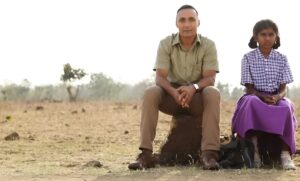
File photo – May 2014, Poorna Malavath, just a month shy of her fourteenth birthday, after becoming the youngest female in the world to scale Mount Everest.
Officials says her achievement is even more impressive as she climbed Mt. Everst peak from the more difficult Tibetan side. Most climbers attempt Everest from the Nepal side, which is easier, but she was denied permission as Nepal does not allow climbers under 16 years of age to scale the world’s tallest mountain peak.
At 13 years and 11 months, Poorna is just a month older than the world’s youngest Everest climber – American Jordan Romero who ascended the peak in 2010 when he was only 13 years and 10 months old.
After Mt. Everest, Poorna learnt rock climbing and mountaineering at Rock Climbing School, Bhongir near Hyderabad initially, trained and prepared by Transcend Adventures, and her logistic arrangements were supported by M/s Transcend Adventures, a Hyderabad based mountaineering expeditions company. She continued her journey of scaling Mt. Kilimanjaro (Africa) in 2016, and Mt. Elbrus, (Russia, Europe) on 27 July 2017. It was a proud moment when she unfurled the Indian tricolor and sang Indian National Anthem at the top of Mt. Elbrus. Her feat of climbing continued with Mt. Aconcagua (South America) in 2019, Mount Carstens pyramid (Oceania) in 2019), Mt. Vinson Massif (Antarctica), 2019), and thereafter other few Indian mountains. She completed her Seven Summits, scaling Mt. Denali (Alaska, North America) in 2022.
Poorna was born on 10th June 2000 in a tiny village, Pakala in the state of Telangana, India. Coming from a poor family background of agricultural laborers, she graduated from Telangana social welfare residential school (TSWREIS) and then went to Minnesota state university, USA as an exchange student where she studied Political sciences to understand woman empowerment.
A film “Poorna” (Courage has no limits), directed by Rahul Bose and based on Poorna’s life story was released in 2017. Then a book, “Poorna the youngest girl in the world to scale Mount Everest,” written by Aparna Thota was also published. Poorna was listed on the “Forbes Indian List” of “Self-made Women” in 2020. Some of the notable awards she received are the Ruby Jubilee Healthcare award from the then President of INDIA Sri APJ Abdul Kalam, The Excellence award by the President of India shri Pranab Mukherji, the Amazing Indians Awards 2016 from the Prime Minister Sri Narendra Modi, and the JFW Awards 2018.
Notably, her achievement could stop child marriages in her community and parents could realize the potential of sending the Girls to school. The schools have increased the number of girls students after her achievement from rural / tribal regions.
The Mountains We Climb Everyday: Poorna Malavath
“I was successful in climbing the mountain at a young age of 13 years with my sheer hard work, and the support of my mentor Mr. Praveen Kumar (I.P.S.), the guidance of my coach Mr. Shekhar Babu Bachinepally and the training at Rock Climbing School, Bhongir. But it was not just the physical mountain that I had to climb. If Everest was just one mountain to climb once in a lifetime, I had to climb one virtual mountain everyday!
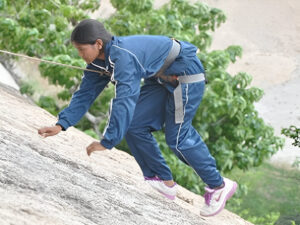
No, I am not talking about the hardship of my training or the humble background. At the age of 12 years, I skipped meals and enjoyed a game of kabbadi in the sun-baked fields., I had to drink milk (loads of it), eat 5 to 7 meals a day, sleep adequately and finally not miss classes at school. Now, trying to do it every single day for almost a year, was far more difficult for a 12 years’ old girl like me, than the 12 hours climb to the summit from Camp-3! But then, my coach had put just one thought in my mind: The goal of standing on the top of the world. ………. Today, I am here at the University of Minnesota studying as an undergraduate. It’s been more than 5 years since I have stood on top of Mt. Everest.”
At the end, she says, “though, I still hate milk but I drink it every single day”
The Telangana government has awarded her with a cash price of Rs 25 lakh and also rewarded with 5 acres of agricultural land. Poorna, with a commendable financial standing, boasts an annual income ranging from 2 to 5 million rupees. Her impressive financial portfolio is underscored by a substantial net worth of ₹269 crore (approximately $40 million). This financial success adds another dimension to her multifaceted life, showcasing achievements not only in education and sports but also in the realm of financial stability and entrepreneurship.
Source: https://www.javatpoint.com/malavath-poorna
Kaamya Karthikeyan
Kaamya Karthikeyan, Indian mountaineer, at 17 yrs of age and a student of Navy Children School, Mumbai, became the youngest female in the world to complete the seven summits challenge in 2024. At 16 years of age, she also became the youngest Indian mountaineer and the word’s second youngest girl to summit Mt. Everest from the Nepal side. Earlier she scaled Mt. Kilimanjaro in 2017, Mt. Elbros and Mt. Kosciuszko in 2018, Mt. Aconcagua in 2020 (becoming the youngest girl in the world to climb the peak), Mt. Denali in 2022, and Mt. Vinson in December 2024.
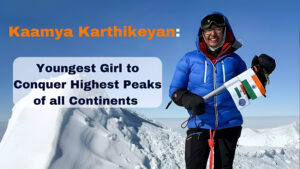
Kaamya’s Himalayan odyssey started in 2015 at the age of only seven with a high-altitude trek to Chandrashila Peak (12000 ft). Then In 2016, she graduated to more difficult and higher treks like Har-ki Dun (13,500 ft), Kedarkantha Peak (13,500 ft), and Roopkund Lake (16,400 ft). In May 2017, Kaamya trekked to the Everest Base Camp in Nepal at 17,600 ft to become the Second youngest girl in the world to accomplish the feat. In May 2019, she trekked to the Brighu Lake (14,100 ft) and crossed the Sar pass (13,850 ft) in Himachal Pradesh. On 24 August 2019, Kaamya summitted on Mt Mentok Kangri II (6,262 m / 20,544 ft) which is her second successful climb above 6,000 m, proving her interest to conquer more heights.
Soon after completing the expedition, in 2019, she cycled from Leh to Khardung La (5,359 m), the highest memorable road in the world, giving her confidence to attempt Mt. Aconcagua, the highest peak outside Asia, (behind Everest). On Feb 20, Kaamya overcame all administrative, physical and mental hurdles to become the world’s youngest girl to summit Mt. Aconcagua. Soon she got the attention of international climbing community, She also got the attention of Indian Prime Minister, who lauded her efforts in his Mann Ki Baat of February 20.

Adding to the long list of wishes, the young girl planned for a cycling expedition from Kanyakumari to Kashmir, a distance of about 3,800 km, symbolizing national integration and spreading awareness on the importance of physical fitness, especially amongst girl children.
Mrika Nikçi
Born 6 December 2001, Mrika Nikçi is an Albanian mountaineer from the Republic of Kosovo. On 15 August 2019, a 17 years’ old, she became the youngest female in the world to climb all the Seven Summits, together with her father Arianit Nikçi (Albanian mountaineer). Her Seven Summit records:
Kilimanjaro-Africa, climbed January 29, 2018
Vinson-Antarctica, climbed on December 16, 2018
Aconcagua-South America, climbed 16 February 2019
Mount Everest-Asia, climbed 27 May 2019
Denali–North America, climbed on 20 June 2019
Mount Elbrus– Russia, climbed on 20 July 2019
Carstensz Pyramid–Indonesia, climbed on 15 August 2019
So, they scaled all the Seven Summits within 17 months, six hardest peaks (Vinson, Aconcagua, Everest, Denali, Elbrus and Carstensz Pyremid) summited for 240 days (eight months). Her story is part of the “25 Women” series UN Women Regional Office for Europe and Central Asia produced for the Generation Equality campaign, marking the 25th year anniversary of the Beijing Platform for Action.
At the Vinson Massif base camp, on a continent where -25 degree Celsius is a constant temperature, the heavy fog prevented their plane from flying Mrika’s group back to Union Glacier. They had to stay at the base camp for 11 days, breaking another record of forced stays there. “But we gave hope to each other every day. This is the best thing in the mountains – it’s all about teamwork.”

“When we were above 1,000 meters, which is called the ‘death zone’, you feel your body dying even though you have oxygen in you. It was this moment when my dad ran out of oxygen, and he couldn’t breathe properly. And that was the moment when I thought ‘what if I lose him’? It’s not what I want. I want to climb with him everywhere.”
Mount Everest showed Mrika how precious life is. “There were big avalanches. We saw a lot of people turning back without fingers, having frostbite on their eyes. Our team walked past the dead body of an Indian woman. We had to step over her, literally cling to her hand to go further up, because she fell on the wire we were hanging on to,” Mrika explains. “And then I understood that we have to give hope and love to people every day because we don’t know if we’ll be alive tomorrow.”
Mrika with the support of her father, begun with mountaineering when she was 13 years old. Mrika has climbed national and regional summits such as:
• Gjeravica (2,656), winter climb (highest peak of Kosovo)
• Jezerca (2.694), winter climb, highest peak in the Dinaric Alps in Albania
• Korab (2.794) (Macedonia–Albania border), the highest peak in Albania, winter climb
• Hajla (2,403) winter climbing (Kosovo)
• Maja e Titos (2.747)-winter climb (Macedonia)
• Maja e Zezë (2,528)–winter climbing (Kosovo)
During 2017 Mrika continued with her mountaineering activities by climbing 2 summits in Bulgaria, specifically the summit of the Seven Lakes in Rila with an altitude (alt) of 2,648 meters, and the summit of Musala 2,925 alt, the highest peak in Balkan. In 2017, due to the weather conditions that have undermined the safety of the mountaineers participating in the expedition, these summit attempts will need to repeat:
1. Mount Blanc– alt 4,880 m – attempt and climb up to the alt of 3,700 m (France).
2. Grand Paradiso– alt 4,061m – attempt and climb up to the alt of 3.650 m (Italy).
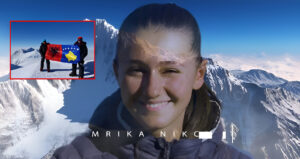
In 2018 Mrika continued with mountaineering and achieved additional success by climbing to another 2 summits, specifically Grossglockner – 3,798 alt (Austria), and one of the Seven World Summits, the summit of Kilimanjaro – 5,895 alt (Tanzania – Africa).
“You know what, when you decide to come and climb Everest, you prepare yourself that you are going to see dead bodies,” Mrika adds. “Maybe something can happen to you, your father, or whoever you’re climbing with, so you prepare. You see a dead body and it’s like, it’s ok. He’s gone. I don’t want to be like him; I have to move on.”
Her interview with CNN
“We saw dead bodies along the way. I think that maybe this could reflect negatively on her — she’s only 17 — but no, she passed that,” Arianit (her father) says. “It was just me, my backpack and my sled,” Mrika recalls. “I had to carry my own house everywhere”. “When I got back, I told everyone that it’s not about your age, gender or religion. It’s about who you are, what you are deep down inside and what you want to achieve in life.”
Together with her family, Mrika founded an NGO, Mrika Seven Summits, to promote responsible and sustainable tourism and share her experience and the importance of teamwork with school students in Kosovo. “I’m planning to inspire young people to achieve their goals in a healthy way,” Mrika smiles. “And, with a lot of work and determination, you can achieve everything because this is what my project was all about – not giving up.”
Acknowledgement:
transadventures.com, https://rockclimbingschool.in/;
https://www.bbc.com/news/world-asia-india-27599570;
https://sportsmatik.com/; https://bookofachievers.com/;
Newspapers: The Hindu, The Times of India,
Wikipedia,

******
So far, the article described the success of school girls who could scale all the seven summits. Now from here, I present a generic article on women mountaineers
Anshu Jamsenpa
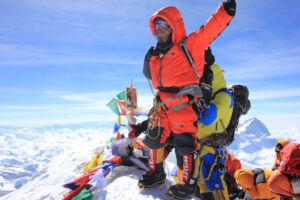
Another great woman mountaineer is Anshu Jamsenpa, the first woman to climb Mount Everest 5 times and also twice in 5 days. Most people don’t make it to the top of the world once, but mother-of-two Anshu Jamsenpa, aged 38, has done it five times, all from the South Col route on the Nepalese side of Mount Everest – an incredible feat for any mountaineer. In 2017, she made the world record and made global headlines when she became the first woman to conquer the Himalayan giant twice in five days – first on May 16, and then again on May 21. Earlier she summited Mt. Everest twice in a single season on May 12 and May 21, 2011.
“When I was small, my family used to watch TV in one room, and I would go to another room, sit quietly, draw the curtains and listen to music. I used to think differently.”
Anshu Jamsenpa summited (third time) the Mount Everest in 2013. Then in 2017 she became the world’s first woman to summit the Mt. Everest twice in a season and she climbed twice within 5 days. This is the fastest double ascents of the tallest crest by an Indian woman. This was her fifth summit and after then she became the first Indian woman and the first mother who climbed the Mt. Everest most of the time (5 times).
On 25th September 2018, Indian President, Shri Ram Nath Kovind presented her the Tenzing Norgay National Adventure Award 2017 (India’s Highest Adventure Award) for making such history.
Junko Tabei
However, the sport found only men climbers, the women folk was found hardly interested, may be out of fear. In 1969, Japanese woman Junko Tabei founded the Joshi-Tohan Club (Women’s Mountaineering Club) for women only, the first of its kind in Japan. The slogan was, “Let’s go on an overseas expedition by ourselves”. She helped funding her climbing activities by working as an editor of Journal of the Physical Society of Japan. Then her club embarked on their first expedition in 1970, climbing Annapurna-III mountain on 19th May 1970.
Their club formed a team, Japanese Women’s Everest Expedition (JWEE), led by Eiko Hisano, which would attempt to summit Mt. Everest. The 15 members’ team, most of them working women, two were mothers, they applied for a climbing permit for Everest in 1971 but had to wait four years to receive a place in the formal climbing schedule. Finally in 1975 Junko Tabei became the first woman mountaineer to reach the summit of Mount Everest and then ascend all the Seven Summits by 1992, climbing the highest peak on every continent, Kilimanjaro (1980), Aconcagua (1987), Denali (1988), Elbrus (1989), Vinson (1991) and Puncak Jaya (1992). By 2005, Tabei was a member in 44 all-female mountaineering expeditions around the world, and by the end of her lifetime (22 September 1939 – 20 October 2016) she had completed 70 climbs of all high mountains.
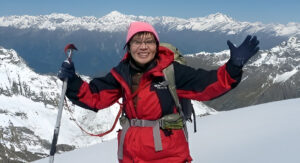
In May 2003, a celebration was held in Kathmandu to celebrate the 50th anniversary of the first successful summit of Mount Everest, and crowds of Nepalese people gathered to cheer a procession of past Everest climbers. Tabei and Sir Edmund Hillary were given a special place in the festivities for their respective achievements.
Now let’s talk about two Indian women
Arunima Sinha
4 January 2019, Arunima Sinha reached the summit of Mount Vinson, becoming the first female amputee to complete the Seven Summits (including Carstensz Pyramid).
In 2011, the 24 years old national level volleyball player Arunima Sinha was thrown off a moving train by thieves for refusing to hand over the gold chain that she was wearing. She was thrown out from the running train and lost her left leg when a train went over it. As she lay in the hospital bed, with one leg amputated, Arunima Sinha took a vow that many would think impossible.
On 18 April 2011, she was brought to the All India Institute of Medical Sciences for further treatment, spending four months at the Institute. She was provided a prosthetic leg free of cost by a private Delhi-based Indian company. “I was on the hospital bed and was reading a newspaper. I read an article about Everest. It mentioned that there are 15 routes that connect to the Everest. Out of those 15, 14 have been targeted by mountaineers and one route is yet to be followed. My bhaisaab (brother-in-law) was sitting beside me. I told him about this route number 15 and my desire to conquer it. He took a pause and said if you have determination then, of course, you can achieve it. After searching the records, my bhaisaab told me that no one in the world has climbed the peak with a prosthetic leg. These words were enough to lit a spark in me. I pondered on the most impossible dream I could set for myself. I decided to climb the Everest.”
Eventually she climbed Mt. Everest with a prosthetic leg. which was arranged by raising funds with the help of Ramakrishna Mission, Vadodara. She contacted Bachendra Pal, the first Indian woman to climb Mount Everest, in 1984, and she said to Arunima “My child, you decided to climb Mount Everest in these situations with Prosthetic (Artificial) leg. You had climbed, achieved Mount Everest my child now just the date is remaining to the World to know”.
And after that Arunima joined a basic mountaineering course from Nehru Institute of Mountaineering and TATA Steel Adventure (TSAF) in Uttarkashi (India). First she climbed Island Peak (6150 metres) in 2012 as preparation for her ascent of Everest. Then Arunima and Susan Mahout, a USAF instructor, together climbed Mount Chaser Sangria (6,622 meters or 21,726 feet) in 2012.
Arunima reached the summit of Mt. Everest 21 May 2013, as part of Eco Everest Expedition, sponsored by the Tata Group. She took 52 days to reach the summit. She wrote a small message thanking the Almighty on a wrapped cloth and pressed it in the snow. Recounting the incident, she said: “It was my tribute to Shankara Bhagawan, and Swami Vivekananda who has been an inspiration throughout my life.
She covered six Summit peaks, of Asia, Europe, South America, Australia, Africa and North America by 2014. She summited Mount Elburs of Russia (Europe) Elevation 5,642 m (18,510 ft), Prominence 4,741 m (15,554 ft) and Kilimanjaro of Tanzania (Africa) Elevation 5,895 m (19,341 ft) and Prominence 5,885 m (19,308 ft). On 4 January 2019, she climbed the seventh peak on Antarctica and became world’s first female amputee to climb Mt. Vinson.
Arunima Sinha is now dedicated towards social welfare and wants to open a free sports academy for poor and disabled people. She is donating all the financial aids she is getting through awards and seminars for the same cause.[38] The academy would be named Shaheed Chandra Shekhar Vikalang Khel Academy.
She wrote the book titled Born Again on The Mountain in 2014.
She was Awarded Tenzing Norgay Highest Mountaineering Award in India same as Arjun Award, and Padma Shri in 2015.
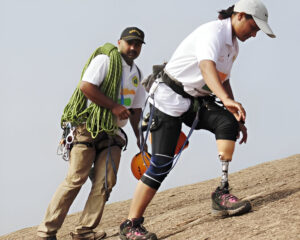
“My prosthetic limb posed some unique problems. Sometimes blood used to come out of the stitches. The ankle and heel would constantly swivel as I tried to climb, causing me to lose my grip often. My right leg was held together by a steel rod. Any pressure sent up spasms of acute intense pain. My Sherpa almost refused to accompany me, assuring me that I was on a suicide mission. Most regular folks don’t stand a chance against the mighty mountain. What did I stand?”
“Once you’ve reached camp four, there’s 3500 feet to the summit. This area is known as the death zone, notorious for the number of lives it has claimed. I saw dead bodies of mountaineers scattered all around. Some had turned into skeleton and some were covered with sheets of snow. A Bangladeshi climber I met earlier breathed his last right before me. Ignoring the cold fear in the pit of my stomach, I trudged on. I told myself that neither I can go back from here nor I can die before reaching the summit. Seeing me struggling immensely with the artificial leg, my Sherpa kept on advising me to return back. But, I overturned his advice. I told him that I just can’t die before conquering this mountain. Thereafter, he started motivating me for the rest of the expedition.”
May 21st was the best day of my life. I had turned my weakness into a winning force on that day and had answered the whole world. I still can’t fully explain that feeling, of spending those few six to seven minutes on the summit.
Earlier my Sherpa had informed me that my oxygen supply was critically low. “Save your life now so that you can climb Everest again later,” he said pragmatically. I said, “If I don’t climb Everest now, my life will not be worth saving.” I erected the flag of my country on the peak, deposited some pictures of my idol Swami Vivekananda next to it. Then I used the last vestiges of my oxygen to take pictures and videos of myself on the peak. I knew I was probably going to die. So it was important that the visual proofs of my achievement make it down to the world. Fifty steps later, my oxygen finished.
Before Arunima Sinha, Rhonda Graham from USA world’s first female amputee climbed Mount Everest in October 2011
Premlata Agrawal
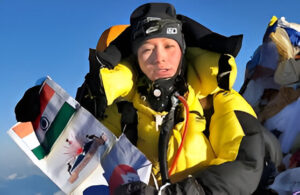
Premlata Agrawal (born 1963) is the first Indian woman to scale the Seven Summits, the seven highest continental peaks of the world. In addition, on 17 May 2011, she became the oldest Indian woman to have scaled Mt. Everest at the age of 48 years
She was awarded the Padma Shri by the Government of India in 2013 and Tenzing Norgay National Adventure Award in 2017 for her achievements in the field of mountaineering.

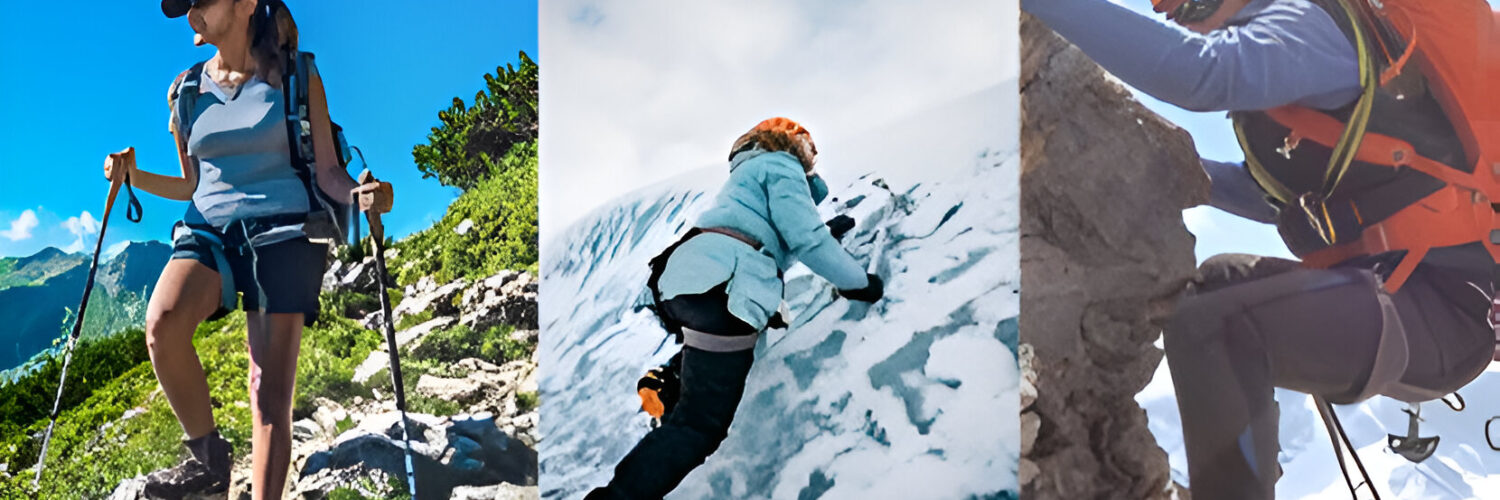
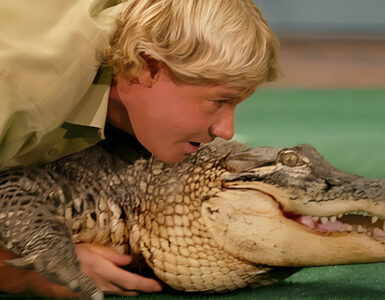
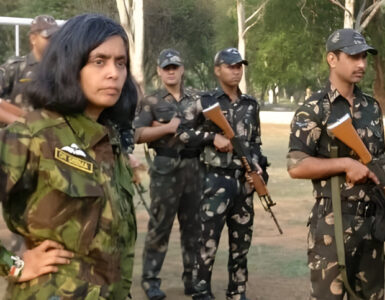










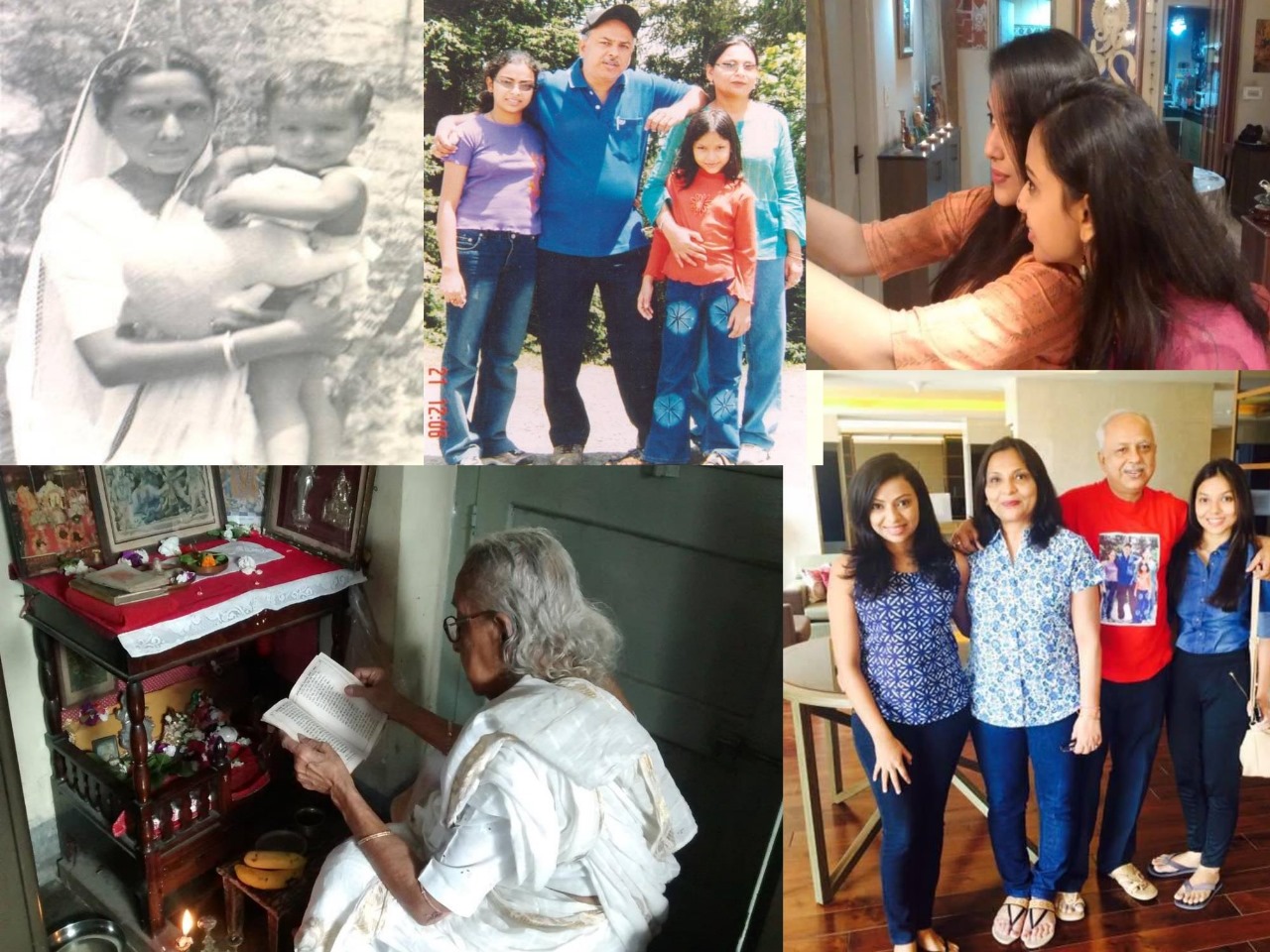
Unbelievable!!
School girls are scaling Mt. Everest+ other summits. Kudos for them, and specially for the girl from a remote village of Telangana.
Thanks that I could read such an informative article.
There was a time when only adults used to dare to summit Everest.
My congratulations to those school girls who could dare to scale all the top summits of all the seven continents.
School girls are at the top of the world. Congratulations dear girls.
Kudos to Mr. Asim Deb for telling us about the Seven Summits. Frankly, I was ignorant of those.
Wonder of wonders, it is a group of brave and adventurous school girls who scaled those summits!
The level of determination and skill required to achieve the feat is beyond my imagination.
And what should we say about Arunima Sinha who reached the tough peak with her prosthetic leg?
Thanks to the writer for sharing those feats of bravery with us.
Thanks Dada, for such wonderful and encouraging feedback. I write on various subjects just because of passion, and readers like you. You liked it, that’s my prize.
লেখকের তথ্য সংগ্রহের পরিধি দেখে প্রাথমিকভাবে হিংসা হওয়াটা অস্বাভাবিক নয়।
তবে ঐ হিংসা বুকে নিয়েই কুর্নিশ করতে হবে লেখক অসীম দেবকে, এই প্রায় অজানা (অন্তত বহুজনের কাছে) নামগুলি, সাজিয়ে গুছিয়ে পরিবেশনের জন্য এবং আমাদের সাথে পরিচয় করানোর জন্য।
লেখকের তথ্য সংগ্রহের নিষ্ঠা দেখে প্রাথমিকভাবে হিংসা হওয়াটা অস্বাভাবিক নয়।
তবে সেই সঙ্গে ওনাকে কুর্নিশ করাটাও জরুরি এই নামগুলির সাথে পাঠকদের পরিচয় করিয়ে দেবার জন্য। অনেক ধন্যবাদ।
লেখকের তথ্য সংগ্রহের নিষ্ঠা দেখে প্রাথমিকভাবে হিংসা হওয়াটা অস্বাভাবিক নয়।
তবে সেই সঙ্গে ওনাকে কুর্নিশ করাটাও জরুরি এই নামগুলির সাথে পাঠকদের পরিচয় করিয়ে দেবার জন্য। অনেক ধন্যবাদ।
The world is changing, and it’s the women who are making the changes. They are changing the myth that difficult tasks were only for the men.
These school girls are the inspirations, and examples for the next generation to accept the most difficult challenges and win these against all odds.
Credit goes to the author for selecting such a topic.
Thanks Ashim for the article. I read about Arunima earlier but not of the others. I am ashtonished to know about the young girls who at such young age climbed so many mountains when they were supposed to spend time only in study and playing.
Hope, the article will encourage the parents to allow their daughters to engage themselves with some sort of adventures.
I was never a champion of sports during my school and college days, but used to take part with interest. That was mid 90s. Neither me nor my parents could even think that I should go for scaling mountains.
So, today when I read that school girls are scaling Mt. Everest, I now bow down and wish to send my deepest congratulations for these tiny girls.
The article is well written, hope it would be a encouraging one for many more teenage school girls.
Thanks author.
Poorna Malavath, the girl from remote place of Telengana, reached Everest peak at the age of 13 years and 11 months. And officials says her success s even more impressive as she climbed Mt. Everest peak from the more difficult Tibetan side. She was denied permission as Nepal does not allow climbers under 16 years of age.
No praise is enough for this girl, and also for all these school girls.
I wish more and more successes for all of you.
Dear girls
Today nothing is a challenge for you. You have proved that even the age is not a barrier. Your success is the inspiration for the future generations.
God bless you.